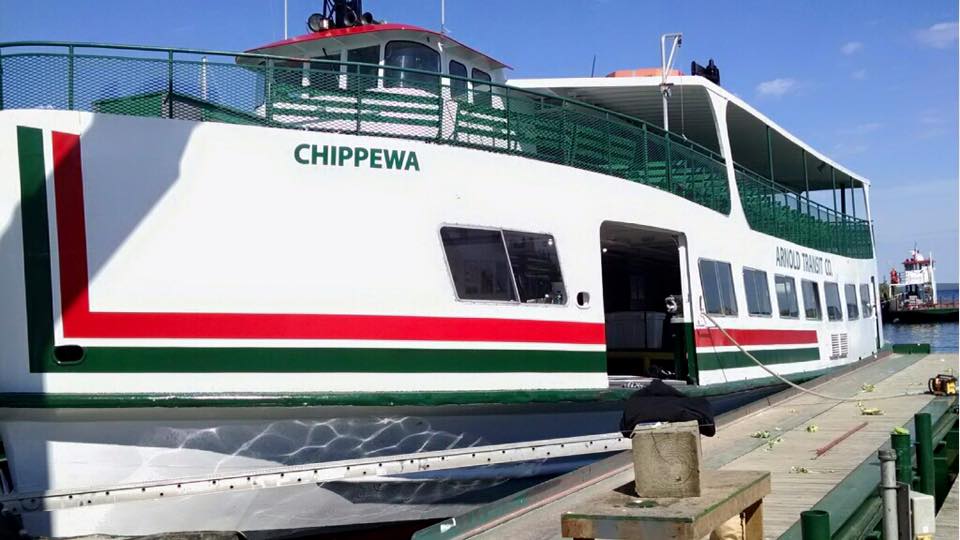Funds from the Michigan Department of Environment, Great Lakes, and Energy’s (EGLE) Fuel Transformation program will support the conversion of the Chippewa from diesel to electric propulsion.
The conversion will be the first of its kind thanks to the $3.06 million award, and it will bring the ferry to zero emissions.
Star Line, now known as the Mackinac Island Ferry Company, will replace two 1988 diesel engines with two brand new electric propulsion motors on the Chippewa, reducing greenhouse gas emissions by 14,152 metric tons of carbon dioxide equivalents and 887 metric tons of nitrogen oxides over the boat’s lifetime. The project will begin immediately as part of a two- to three-year overhaul that will redesign and modernize the vessel’s hull and appearance.
Governor Gretchen Whitmer says,
“The ferry trip to Mackinac Island is Michigan at its best — a view of our two peninsulas and the Mighty Mac while gliding through our Great Lakes. Now, with a new grant from EGLE, one of the iconic island ferry fleets is switching to electric, ensuring that this Pure Michigan journey is more cost-effective and sustainable for decades to come. We are continuing to make investments to lead the future of mobility and electrification, so we can grow our economy, create good-paying jobs, and lower energy costs for families and businesses. Our mobility leadership must extend from electric cars and buses on the road to industrial power and watercraft, too. Converting a ferry in the Mackinac fleet to electric will build on our clean-energy leadership and help us achieve the goals of the MI Healthy Climate Plan to make our state carbon-neutral by 2050. The budget I put forward includes several investments in this space, and today’s ferry grant is another step forward as we build a brighter future for Michigan.”
The grant covers half the cost of the project, which includes installing 1.5 megawatts in shore power infrastructure at the Mackinaw City ferry dock, as electric power upgrades are also planned for the ports of St. Ignace and Mackinac Island.
“This project is a first critical step in the strategy to upgrade and modernize marine transportation in the Straits of Mackinac,” said Director Chris Byrnes of the Mackinac Economic Alliance. “Of course, Mackinac Island is famous for alternative modes of transportation, as cars are not allowed on the island. Everyone walks, rides bikes or horses and, of course, ferry boats, so the island is already a Michigan leader in alternative forms of transportation.”
Jerry Fetty, CEO of Mackinac Island Ferry Company comments:
“We actually have quite a few additional ferries and our plan would be to take that knowledge that we learn by converting to Chippewa and applying it to our other ferries as we go forward with eventually converting pretty much all of our ferries,”
As the primary means of transportation to Mackinac Island, ferries serve about 500 year-round islanders and 750,000 visitors a year, with a summer peak of more than 16,500 a day. During peak months, ferries make up to 125 round trips daily. The 84-foot ferry Chippewa, built in 1962, is expected to carry 250-300 passengers after the electric conversion and MIFC’s concurrent redesign and modernization of the vessel.
The project is the first initiative from the Mackinac Island Transportation Master Plan, conducted by the Michigan Department of Transportation as the key piece of a larger initiative to modernize the ferry fleet and freight ships serving the region. That effort includes the transition from fossil fuels, supported by creating local shipbuilding and servicing jobs and a marine industry training hub. The long-term goal is to transition all 138 Upper Great Lakes ships in the 50- to 200-ton range to electric or hybrid-electric power.







